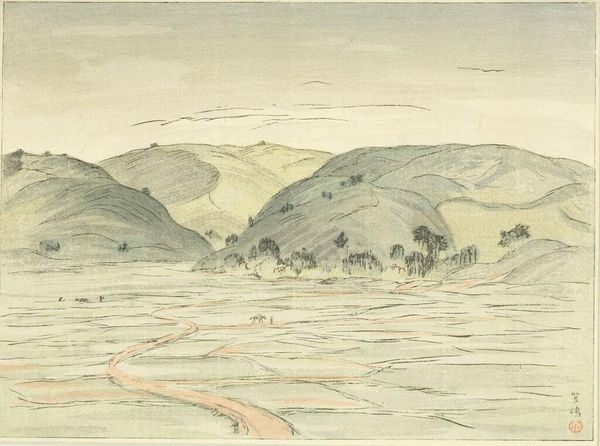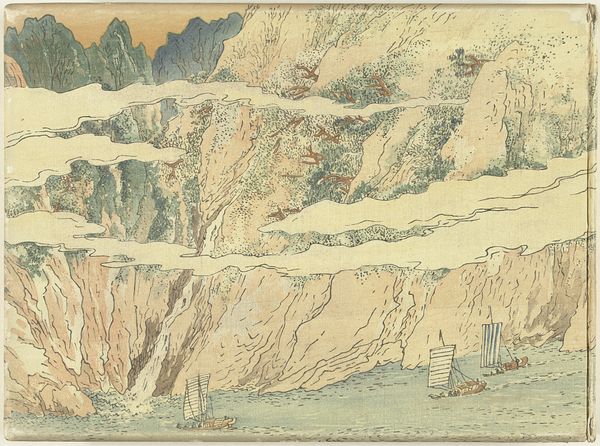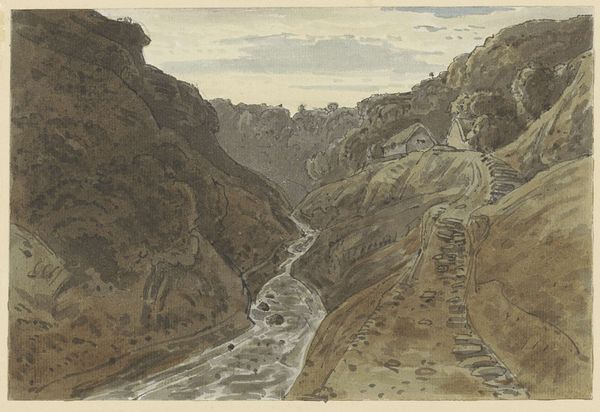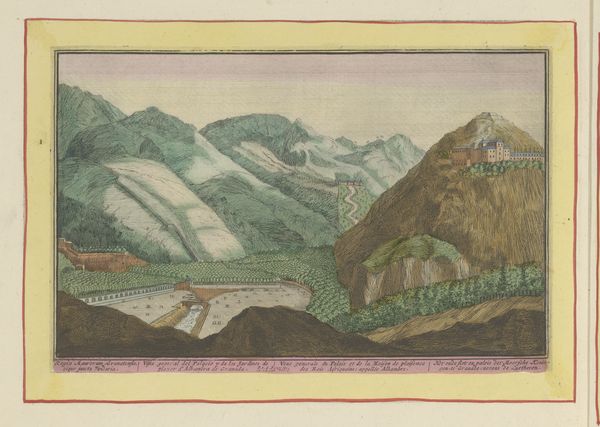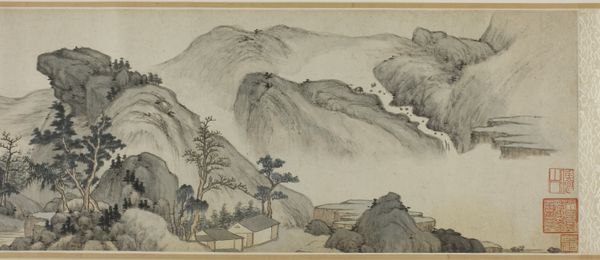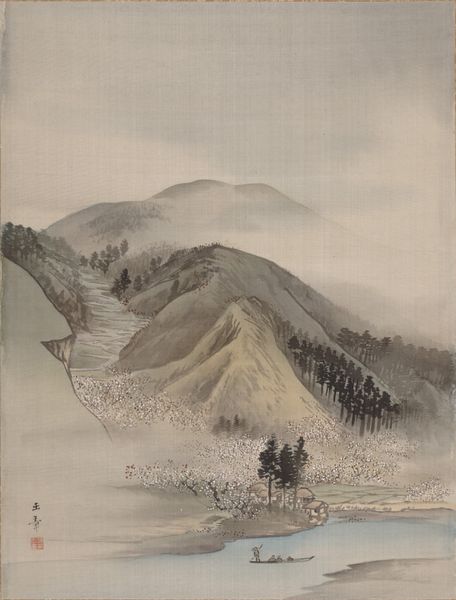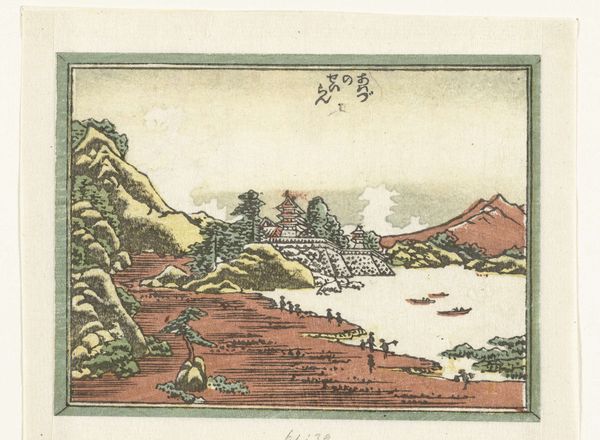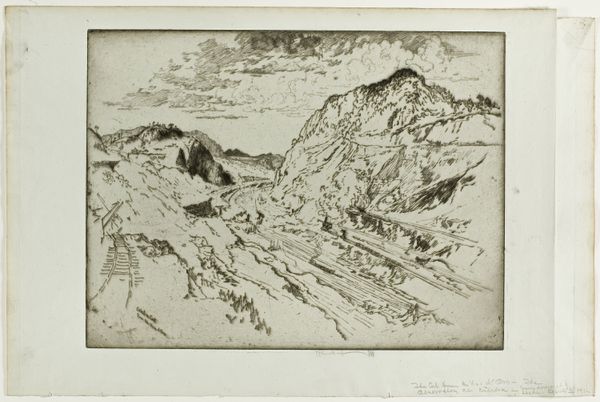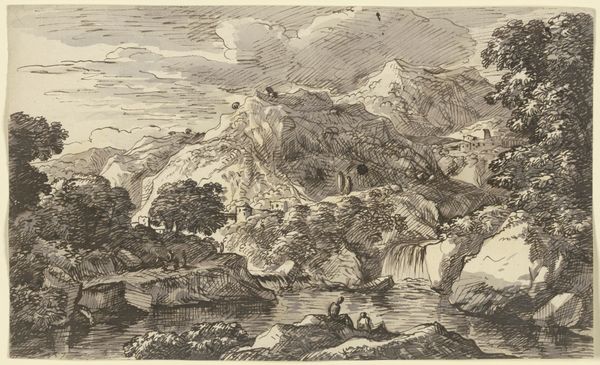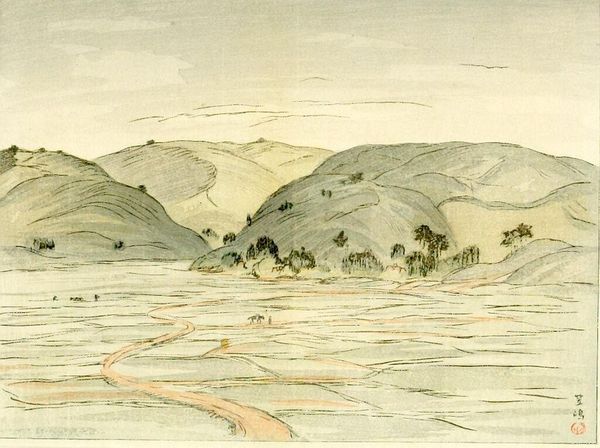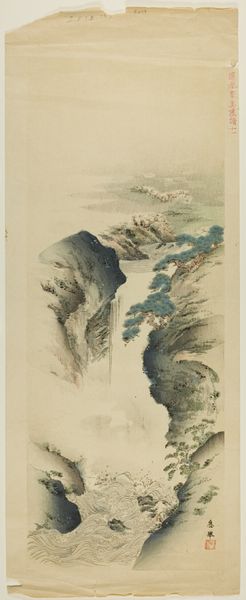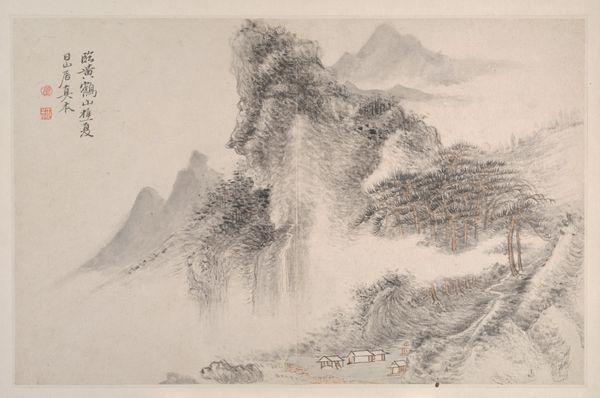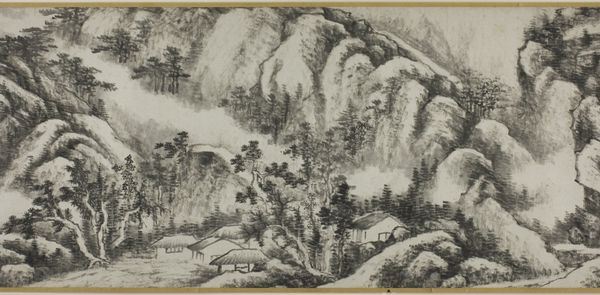
Dimensions: height 230 mm, width 312 mm, thickness 34 mm
Copyright: Rijks Museum: Open Domain
Curator: Right now, we are viewing "China in 30 rolschilderingen - eerste deel," a print by Fukuda Bisen, likely created between 1920 and 1925. It’s currently part of the Rijksmuseum collection. What strikes you most about this particular piece? Editor: Immediately, it's the sense of journey. You've got this hazy dreamscape that pulls you in with those winding paths up the mountains and the little boats below—like clues in some forgotten fairytale. Curator: That’s a perceptive observation. The style evokes Ukiyo-e traditions with its linear quality and landscape subject matter, which served as a kind of escapism during times of rapid modernization. These types of prints, produced in the early 20th century, highlight an imagined idea of "China", or "Asia" influenced by political narratives and European collecting culture. Editor: Absolutely. It feels both familiar and remote, romanticized almost. I'm particularly drawn to the hazy clouds – that visual trick to obscure and reveal simultaneously… creates an illusion! Curator: Yes, it’s deliberately crafted. Notice how the artist employs a watercolor-like palette despite the piece being a woodcut. The lines are crisp yet softened by the hues, carefully balancing technique and style. The composition places us as viewers both above and below the landscape – in the water and on the mountains! Editor: Clever! The soft blues and greens really underscore a sense of tranquility. It almost invites you to fill in the blanks of the story – a temple perched above clouds; the silent whispers carried on the wind. I bet those two boats hold all the wisdom in this frame. Curator: What you are perceiving really gets to the core of how these prints functioned. The art of landscape was very politically charged at this time – there was intense interest and investment from European individuals, governments, and collectors in cultural products emerging from East Asia. Editor: So, it's as much about what's there as what we project onto it. And ultimately a gorgeous piece! Thanks for unlocking this history! Curator: Indeed! These prints offered a way for audiences to experience faraway places through very politically charged lenses. And on that note, it’s time to delve into our next work.
Comments
No comments
Be the first to comment and join the conversation on the ultimate creative platform.
